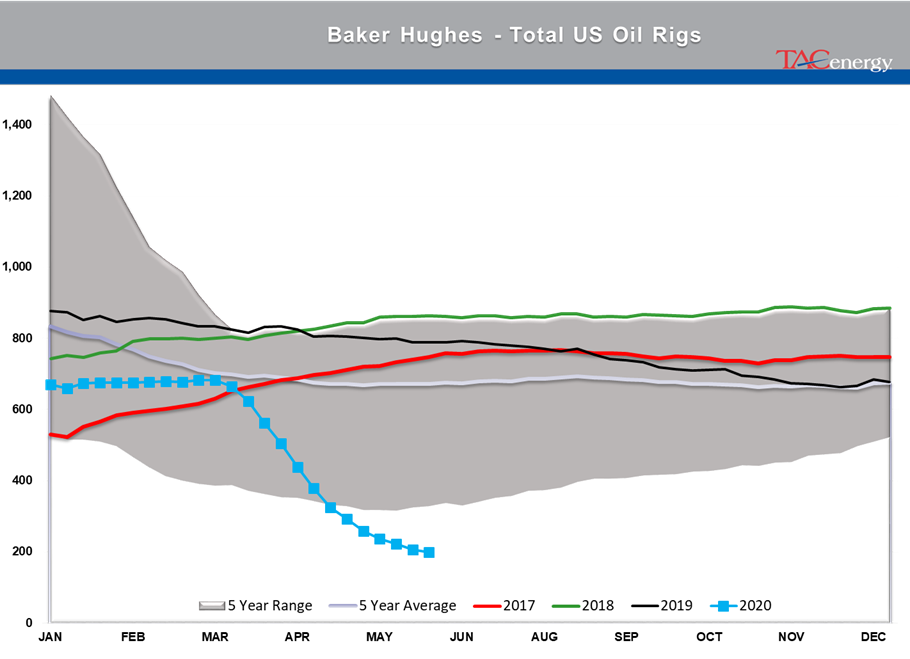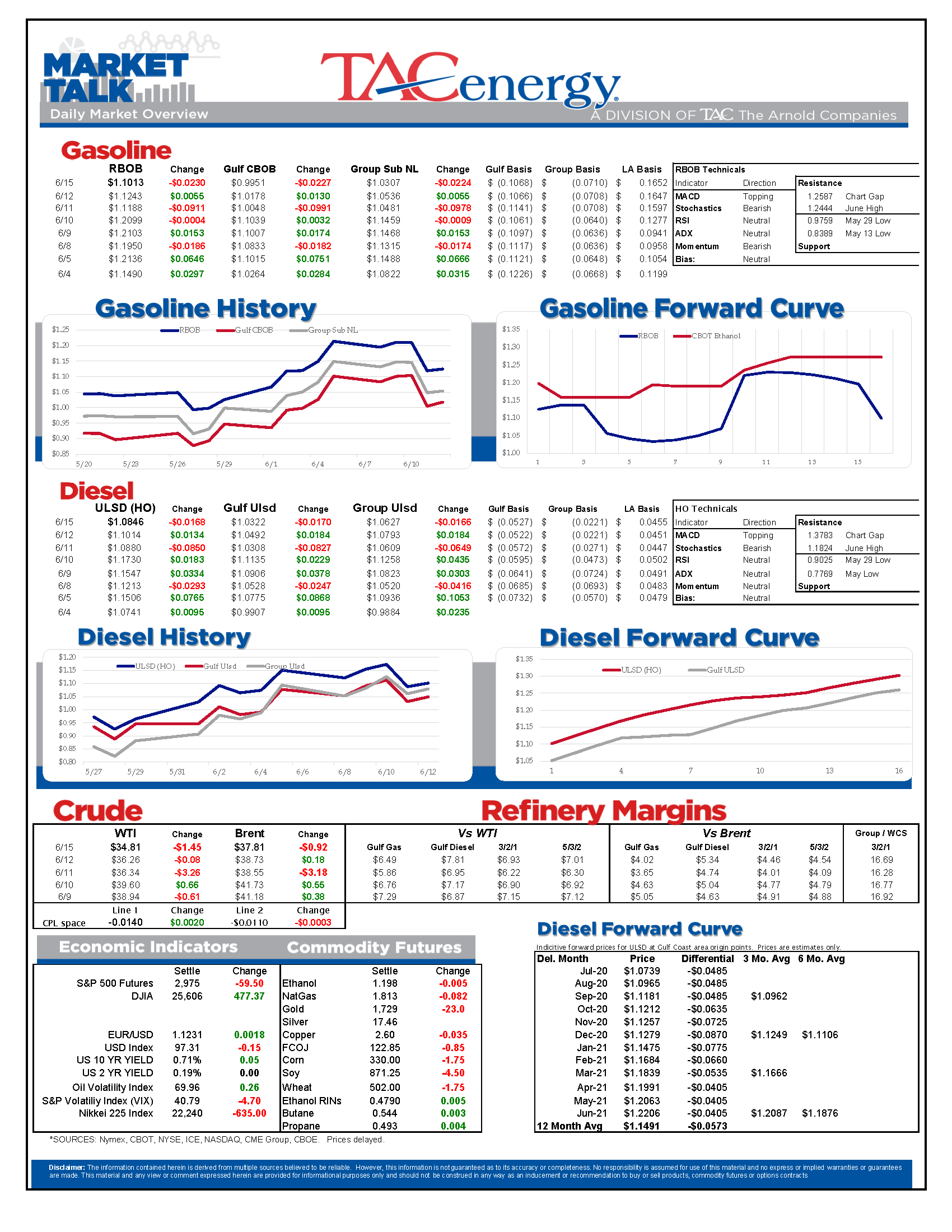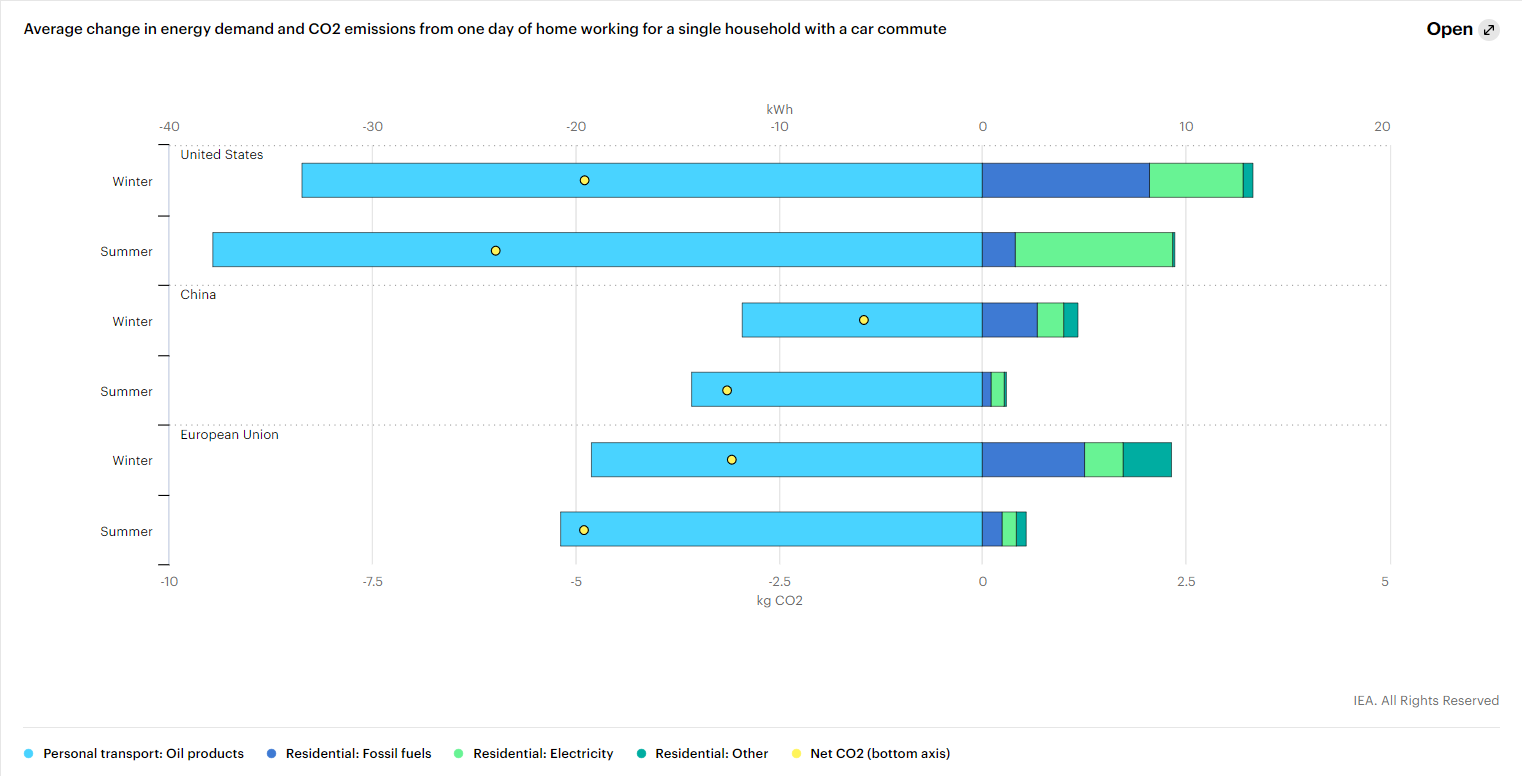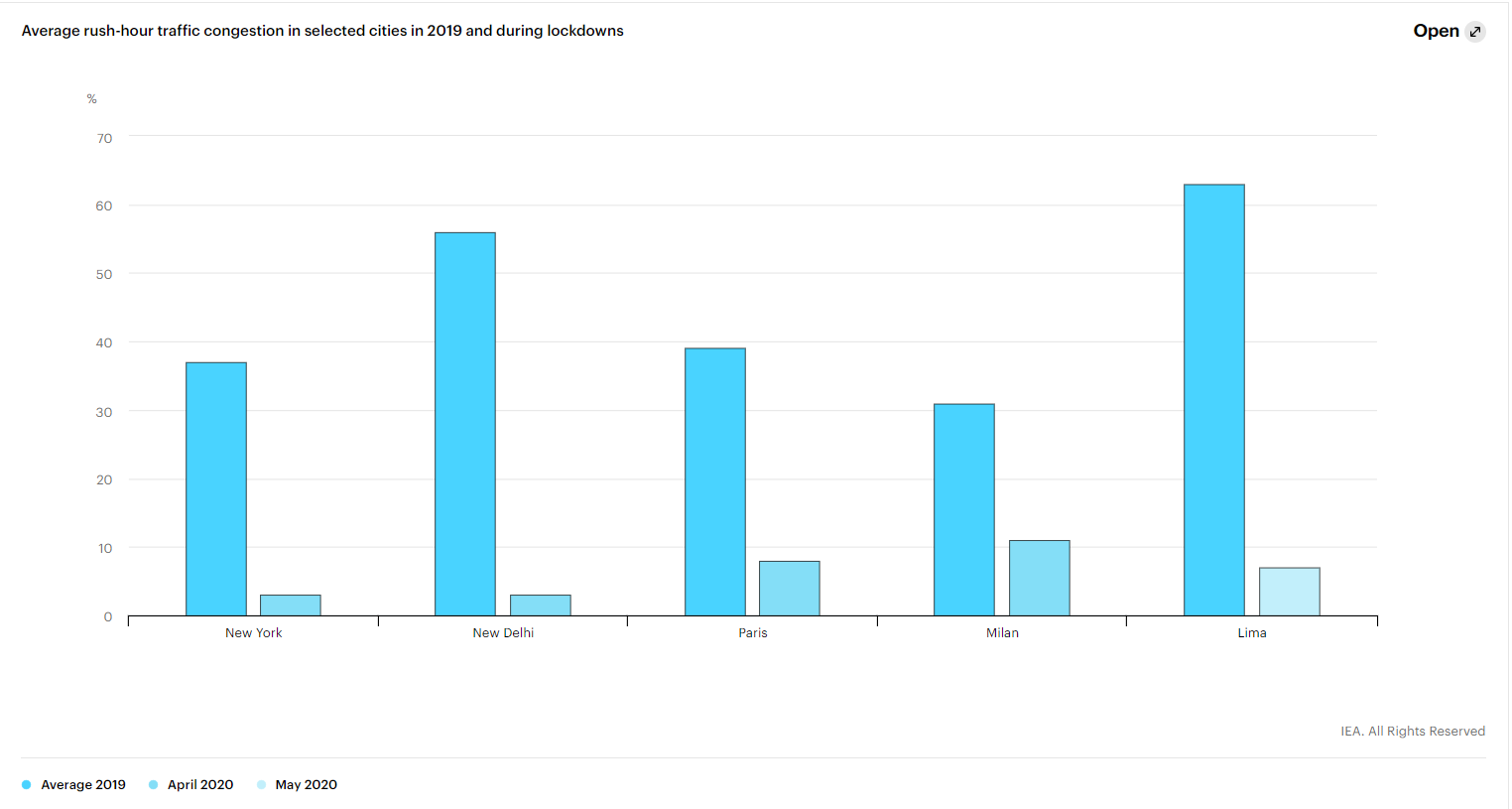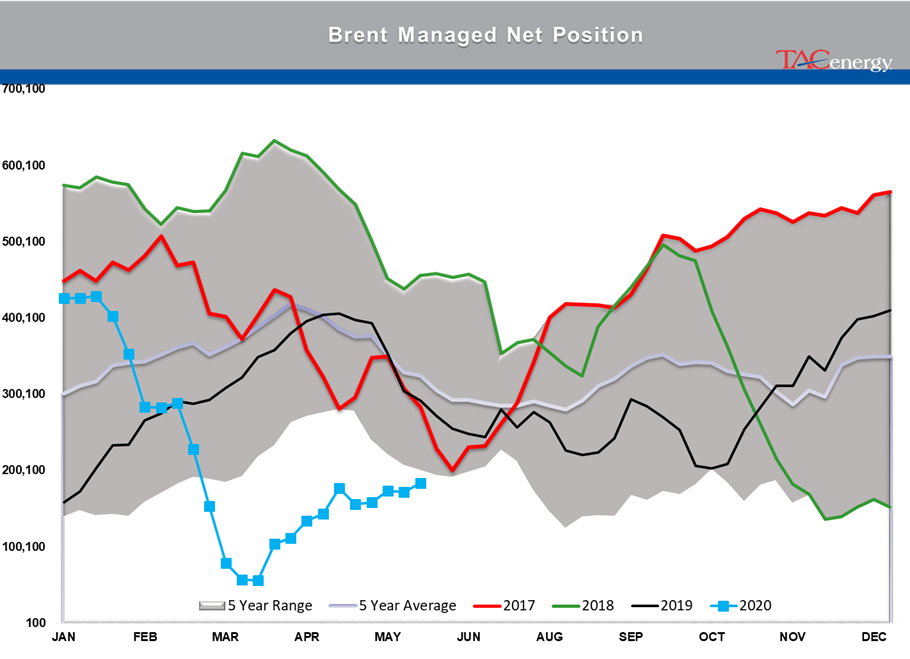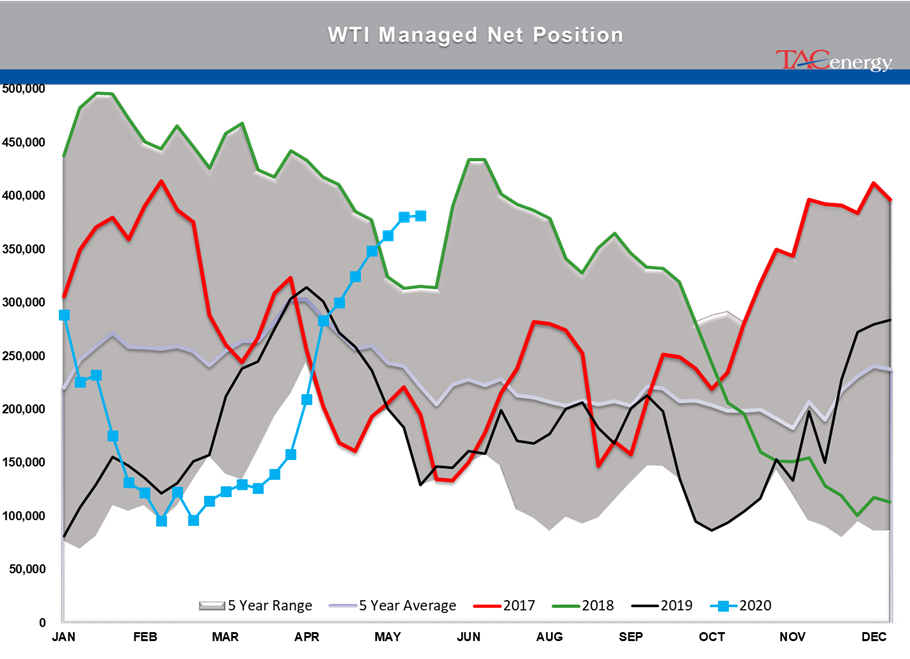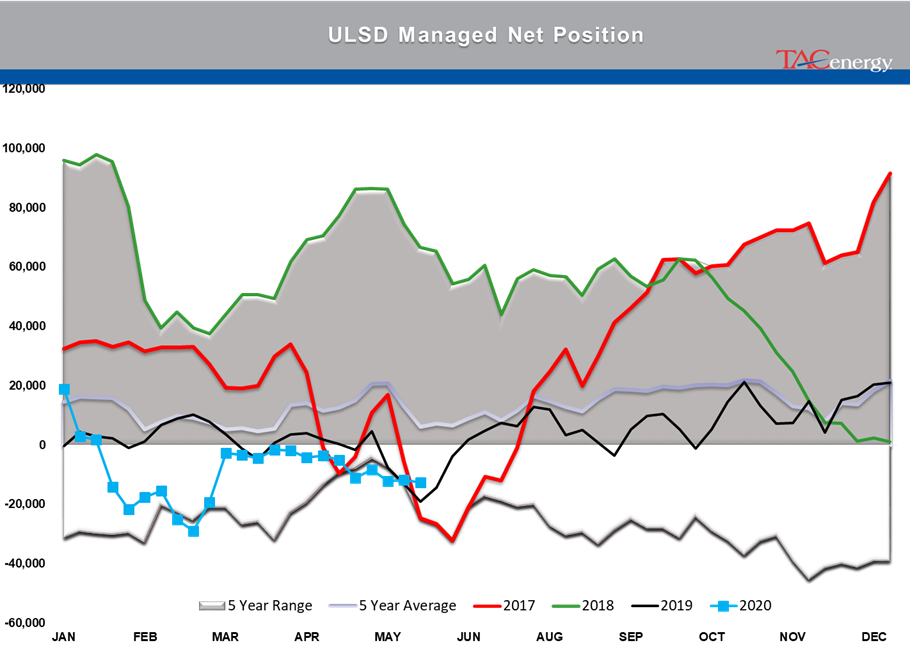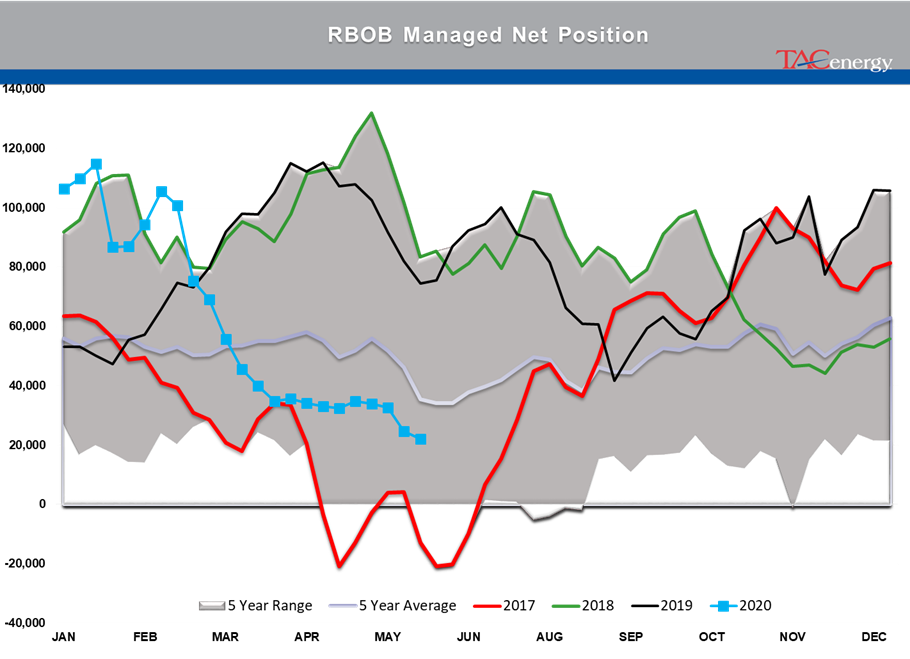Markets Caught In Another “Risk Off” Wave

Energy and equity markets are caught in another “risk off” wave to start the week, as concerns over a second wave of coronavirus continue to dominate business headlines. The early sell-off is threatening a break of the weekly bullish trend line, which threatens a move back into the $20’s for WTI and Brent if that chart support can’t hold, which would drag refined products back below the one dollar mark.
The IEA published a study analyzing the change in energy demand in a work-from-home environment, noting the sharp drop in emissions from vehicles, offset to some degree by an increase in residential electricity and natural gas demand. It’s not just energy demand that is shifting in the work-from-home era, sugar demand is expected to drop for the first time in over 40 years as a result.
Baker Hughes reported seven more oil rigs taken offline last week, bringing the total U.S. oil and gas rig count to yet another record low. If you’re looking for the bright side in yet another rig reduction, this was the smallest weekly decrease in the 13 reports since the COVID-19 shutdown began. It’s hard to say which is more notable, the fact that drilling rigs have dropped by 71 percent in less than three months, or that there are still 199 rigs actively drilling new oil wells in this environment.
Money managers continue to make minimal changes in their petroleum contract holdings, according to the latest report from the CFTC. The large speculative category of trader saw modest increases in WTI and Brent length last week, while refined products saw small decreases.
BP issued a press release this morning that revised its long-term price assumptions for oil due to expected economic damage from COVID-19, and said it was planning on taking non-cash write downs of around $15 billion (give or take a couple billion) as a result. This type of write down it likely to become a theme when Q2 earnings reports are released as prices only started to drop in the last few weeks of Q1.
Click here to download a PDF of today's TACenergy Market Talk.
News & Views
View All
Energy Futures Are Caught Up In Headline Tug-O-War This Morning
Energy futures are caught up in headline tug-o-war this morning with Canadian oil production concerns and a positive US GDP report trying to push prices higher while sinking Chinese demand worries and Gaza ceasefire hopes are applying downward pressure. The latter two seem to be favored more so far this morning with WTI and Brent crude oil futures down ~45 cents per barrel, while gasoline and diesel prices are down about half a cent and two cents, respectively.
No news is good news? Chicago gasoline prices dropped nearly 30 cents yesterday, despite there not being any update on Exxon’s Joliet refinery after further damage was discovered Wednesday. Its tough to say if traders have realized the supply situation isn’t as bad as originally thought or if this historically volatile market is just being itself (aka ‘Chicago being Chicago’).
The rain isn’t letting up along the Texas Gulf Coast today and is forecasted to carry on through the weekend. While much of the greater Houston area is under flood watch, only two refineries are within the (more serious) flood warning area: Marathon’s Galveston Bay and Valero’s Texas City refineries. However, notification that more work is needed at Phillip’s 66 Borger refinery (up in the panhandle) is the only filing we’ve seen come through the TECQ, so far.
Premiums over the tariff on Colonial’s Line 1 (aka linespace value) returned to zero yesterday, and actually traded in the negatives, after its extended run of positive values atypical of this time of year. Line 1’s counterpart, Line 2, which carries distillates from Houston to Greensboro NC, has traded at a discount so far this year, due to the healthy, if not over-, supply of diesel along the eastern seaboard.
Click here to download a PDF of today's TACenergy Market Talk.

WTI And Brent Crude Oil Futures Are Trading ~$1.50 Per Barrel Lower In Pre-Market Trading
The across-the-board drawdown in national energy stockpiles, as reported by the Department of Energy yesterday, stoked bullish sentiment Wednesday and prompt month gasoline, diesel, and crude oil futures published gains on the day. Those gains are being given back this morning.
The surprise rate cut by the People’s Bank of China is being blamed for the selling we are seeing in energy markets this morning. While the interest rate drop in both short- and medium-term loans won’t likely affect energy prices outright, the concern lies in the overall economic health of the world’s second largest economy and crude oil consumer. Prompt month WTI and Brent crude oil futures are trading ~$1.50 per barrel lower in pre-market trading, gasoline and diesel are following suit, shaving off .0400-.0450 per gallon.
Chicagoland RBOB has maintained its 60-cent premium over New York prices through this morning and shows no sign of coming down any time soon. Quite the opposite in fact: the storm damage, which knocked Exxon Mobil’s Joliet refinery offline on 7/15, seems to be more extensive than initially thought, potentially extending the repair time and pushing back the expected return date.
There are three main refineries that feed the Chicago market, the impact from one of them shutting down abruptly can be seen in the charts derived from aforementioned data published by the DOE. Refinery throughput in PADD 2 dropped 183,000 barrels per day, driving gasoline stockpiles in the area down to a new 5-year seasonal low.
While it seems all is quiet on the Atlantic front (for now), America’s Refineryland is forecasted to receive non-stop rain and thunderstorms for the next four days. While it may not be as dramatic as a hurricane, flooding and power outages can shut down refineries, and cities for that matter, all the same, as we learned from Beryl.

